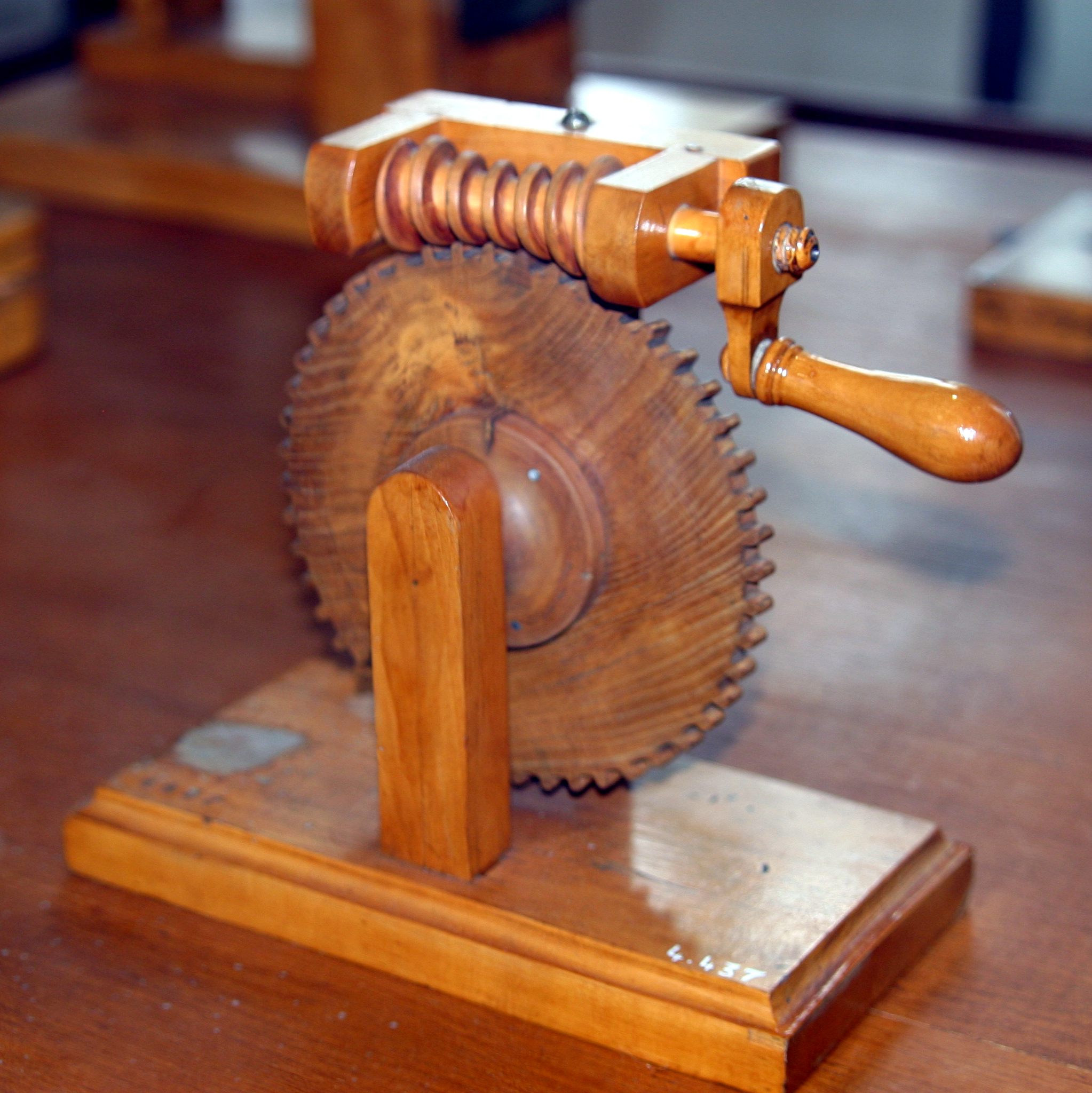|
Duplex Worm
A duplex worm or dual lead worm is a worm gear set where the two flanks are manufactured with slightly different modules and/or diameter quotients. As a result of this, different lead angles on both tooth profiles are obtained, so that the tooth thickness is continuously increasing all over the worm length, while the gap between two threads is decreasing. This allows control of backlash. At the worm wheel, the different modules result in different addendum modification coefficients and rolling circle diameters at both flanks. Because of this the profiles are different at the front and at the rear flank. The thickness of each tooth and the tooth gaps remain constant at the circumference of the wheel. Backlash adjustment is done by shifting the worm axially, so that the section of the worm with the needed tooth thickness will be in contact with the wheel, giving the desired backlash (fig. 1). This way, backlash can be easily adjusted to any desired value when mounting the gear, a ... [...More Info...] [...Related Items...] OR: [Wikipedia] [Google] [Baidu] |
Worm Gear
A worm drive is a gear arrangement in which a worm (which is a gear in the form of a screw) meshes with a worm wheel (which is similar in appearance to a spur gear). The two elements are also called the worm screw and worm gear. The terminology is often confused by imprecise use of the term ''worm gear'' to refer to the worm, the worm wheel, or the worm drive as a unit. The worm drive or "endless screw" was invented by either Archytas of Terentum, Apollonius of Perga, or Archimedes, the last one being the most probable author.Witold Rybczynski, '' One good turn : a natural history of the screwdriver and the screw''. London, 2000. Page 139. The worm drive later appeared in the Indian subcontinent, for use in roller cotton gins, during the Delhi Sultanate in the thirteenth or fourteenth centuries.Irfan Habib''Economic History of Medieval India, 1200–1500'', page 53 Pearson Education Explanation A gearbox designed using a worm and worm wheel is considerably smaller than on ... [...More Info...] [...Related Items...] OR: [Wikipedia] [Google] [Baidu] |
Backlash (engineering)
In mechanical engineering, backlash, sometimes called lash, play, or slop, is a clearance or lost motion in a mechanism caused by gaps between the parts. It can be defined as "the maximum distance or angle through which any part of a mechanical system may be moved in one direction without applying appreciable force or motion to the next part in mechanical sequence."p. 1-8 An example, in the context of gears and gear trains, is the amount of clearance between mated gear teeth. It can be seen when the direction of movement is reversed and the slack or lost motion is taken up before the reversal of motion is complete. It can be heard from the railway couplings when a train reverses direction. Another example is in a valve train with mechanical tappets, where a certain range of lash is necessary for the valves to work properly. Depending on the application, backlash may or may not be desirable. Some amount of backlash is unavoidable in nearly all reversing mechanical couplings, ... [...More Info...] [...Related Items...] OR: [Wikipedia] [Google] [Baidu] |
Backlash (gear)
In mechanical engineering, backlash, sometimes called lash, play, or slop, is a clearance or lost motion in a mechanism caused by gaps between the parts. It can be defined as "the maximum distance or angle through which any part of a mechanical system may be moved in one direction without applying appreciable force or motion to the next part in mechanical sequence."p. 1-8 An example, in the context of gears and gear trains, is the amount of clearance between mated gear teeth. It can be seen when the direction of movement is reversed and the slack or lost motion is taken up before the reversal of motion is complete. It can be heard from the railway couplings when a train reverses direction. Another example is in a valve train with mechanical tappets, where a certain range of lash is necessary for the valves to work properly. Depending on the application, backlash may or may not be desirable. Some amount of backlash is unavoidable in nearly all reversing mechanical couplings, al ... [...More Info...] [...Related Items...] OR: [Wikipedia] [Google] [Baidu] |
